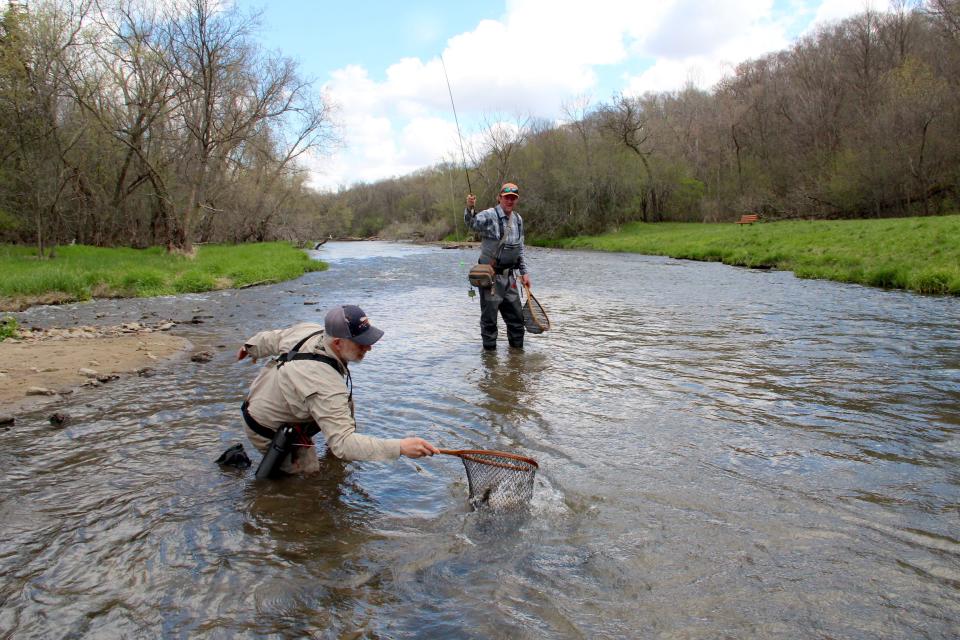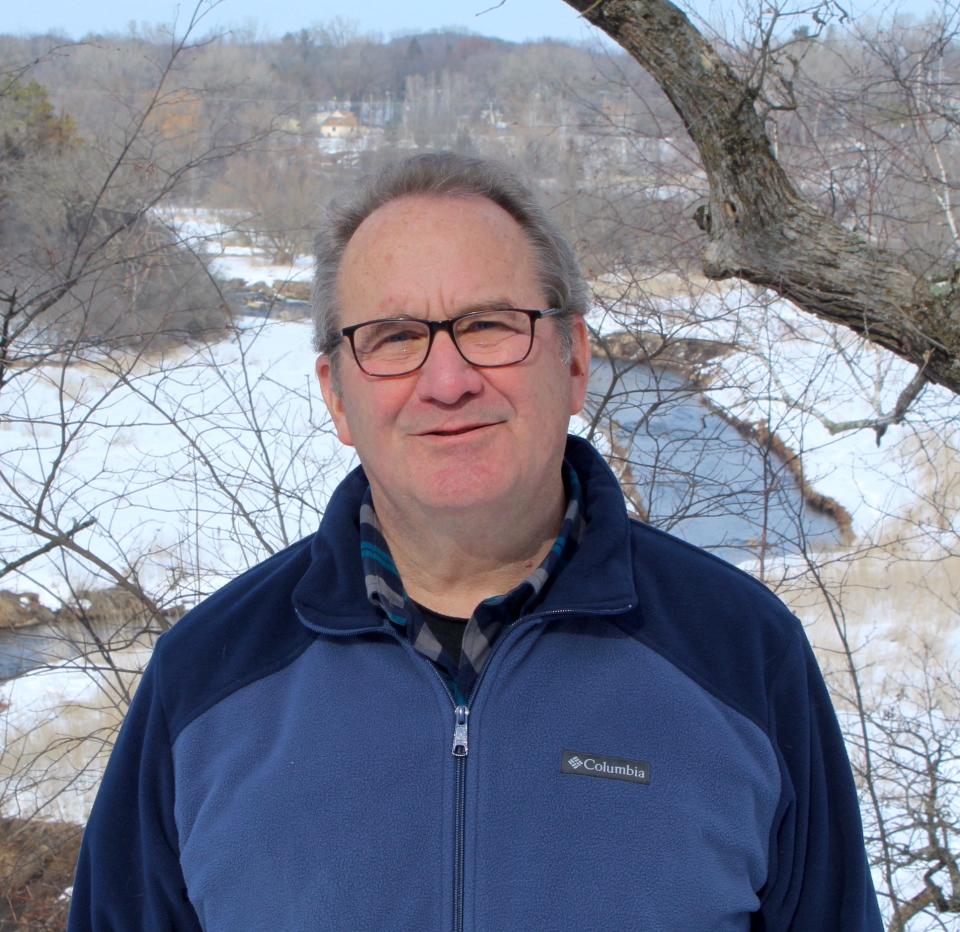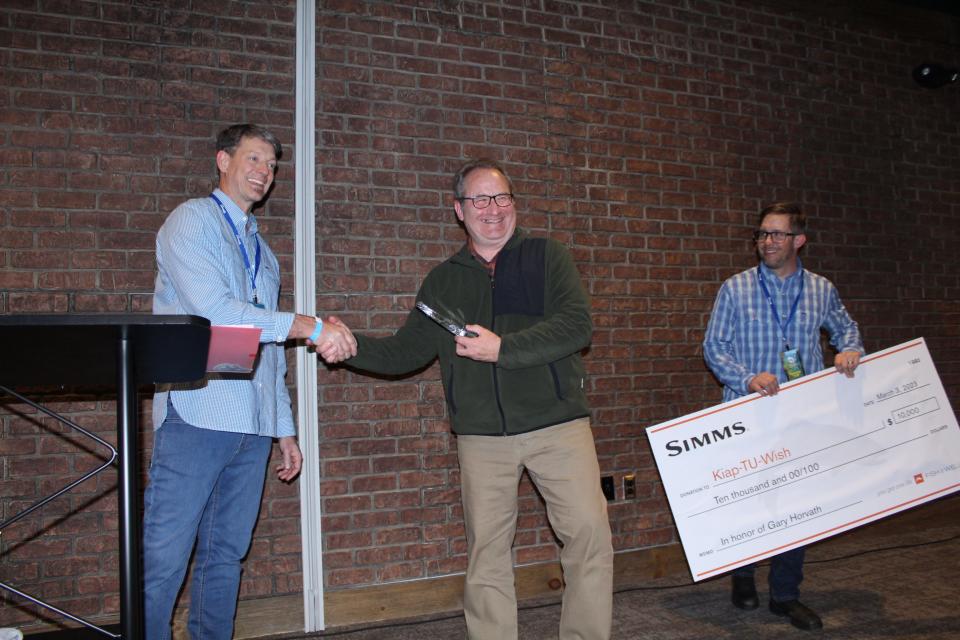Smith: River Falls fishermen lead the effort to fix a trout stream ‘mucked up’ by troublesome dams

RIVER FALLS – The Kinnickinnic River rises from springs in St. Croix County and flows for 22 miles through farms, one city, two dams and a limestone canyon before entering the St. Croix River.
The "Kinni" is designated a Class 1 trout stream and an Outstanding Resource Water (ORW) by the Wisconsin Department of Natural Resources.
With populations estimated at more than 5,000 trout per mile in the upper stretches, its long been known and loved by anglers.
In fact, in 1988 Gary Horvath decided to move to River Falls because of the river.
"I was fishing (the Kinni) so much I just figured it made sense," said Horvath, who grew up in Brookfield, graduated from UW-Stevens Point with a degree in water resources with a chemistry emphasis and worked as a chemist and a manager for the Minnesota Department of Agriculture in St. Paul.
But despite the river's strong draw, it had problems. The two biggest arguably were the large concrete structures in River Falls dating to 1902, the Powell Falls and Junction Falls dams.
The hydroelectric dams created 15-acre, sediment-laden impoundments and generated only about 1% of local energy needs.
And as was well known by Horvath, his friend Kent Johnson of Hudson and other members of Kiap-TU-Wish, the local Trout Unlimited Chapter, the structures "mucked up" the ecosystem of the river, including by artificially warming its water.
In 1988 the dams went through a relicensing process with no opposition.
"I thought to myself, what were we thinking?" said Johnson, an aquatic ecologist who for 40 years led a water monitoring program for the Twin Cities' Metropolitan Council. "We could have had an opportunity to do something then."
Horvath and Johnson, both career scientists and life-long anglers, talked about what could be done. The dams had been relicensed for 30 more years, or through 2018.
"We decided it wouldn't happen again in our lifetimes," Horvath said.

A worthy goal.
But how?
Horvath and Johnson put together a plan. Working as volunteers with fellow members of Kiap-TU-Wish, in 1991 they started a thermal monitoring program at sites along the river.
It was clear the dams heated the river, especially in summer, and that was bad for the river's brook and brown trout and other cold-water animals and plants living in the Kinni.
But the men knew it wouldn't be enough to talk about the problems. They needed data to prove them.
Over the next three decades they put together a data set that has been described by the DNR as the longest, most accurate and most consistent of any in the state.
The monitoring showed river temperatures were often 4 degrees higher in the section downstream of the dams, Horvath said.
Reports from the volunteers got the attention of local officials.
A pair of 100-year flood events also damaged the lower dam and caused a serious examination of the costs related to repairing the structures.
The path forward was becoming clear to city leaders.
In February 2018, the River Falls city council unanimously approved a plan to decommission and remove the dams. The plan as passed has a target date of 2026 for removal of the Powell Dam, and a target date range of 2035 to 2040 for removal of the Junction Falls Dam.
Yes, individuals can make a difference.
For his work on the project, Horvath was named 2023 Conservationist of the Year by Fly Fisherman Magazine.
When he received a phone call notifying him of the award, Horvath said he thought he was being "punked."
"I don't think I deserve it on my own," said Horvath, 65. "There's a lot of people in town who stepped up in this effort. I can only accept it as part of the team."
The award was presented March 3 at the River Falls Fly Fishing Film Festival (R4F).

Ross Purnell, editor of Fly Fisherman, and John Frazier, public relations manager of Simms Fishing Products, presented Horvath with a plaque and a $10,000 check.
The event, held at Tattersall Distillery in River Falls and as a fund-raiser for the Kinnickinnic River Land Trust, was packed with about 550 people in attendance.
Frazier said it was great to see so many members of the angling community to come together for such a great cause.
"It always feels great to highlight the achievements of individuals such as Gary," Frazier said. "But I think it's also fundamentally essential that we amplify these successes in a way that illustrates there is a lot of positive momentum that can and is happening across the conservation landscape. As a brand it is our hope that by having gatherings like this and highlighting Gary and his accomplishments we'll inspire more to engage, get involved and take action and strengthen the voice we have as an angling community."
Purnell said the magazine offers the annual award to show what can be accomplished at the grass-roots level by people who put in the time and effort doing small things and eventually making a big difference.
"There couldn't be a better example of that than what Gary and all of his peers have done," Purnell said. "What's really inspiring is the work he's done and the feeling I'm getting in this room, a room full of people in a community who are proud of where they live and proud of their rivers and are putting the time and effort in to make it not just a better place to go fishing but a better place to live."
Cries of "speech, speech!" went up from the crowd.
True to his modest nature, Horvath spent exactly 40 seconds with the microphone.
He thanked Fly Fisherman magazine and Simms, said he was really honored, and went on to thank his wife, Mary, for her support over the years and all the other people who have worked to help the river.
Significantly, he noted the $10,000 will be donated to help pay for a required feasibility study by the U.S. Army Corps of Engineers.
The dam removal issue is not entirely cut-and-dried yet.
But it's looking like it will happen. And quite possibly on an accelerated timeline.
"It's time for the Kinni to run free again," said John "Duke" Welter of Viroqua, a long-time Kiap-TU-Wish member. "Gary's award helps underscore just how important it is for local residents to get involved and work for change. It can happen."
THANK YOU: Subscribers' support makes this work possible. Help us share the knowledge by buying a gift subscription.
DOWNLOAD THE APP: Get the latest news, sports and more
This article originally appeared on Milwaukee Journal Sentinel: Volunteer fishermen led effort to fix Kinnikinnic River in River Falls

